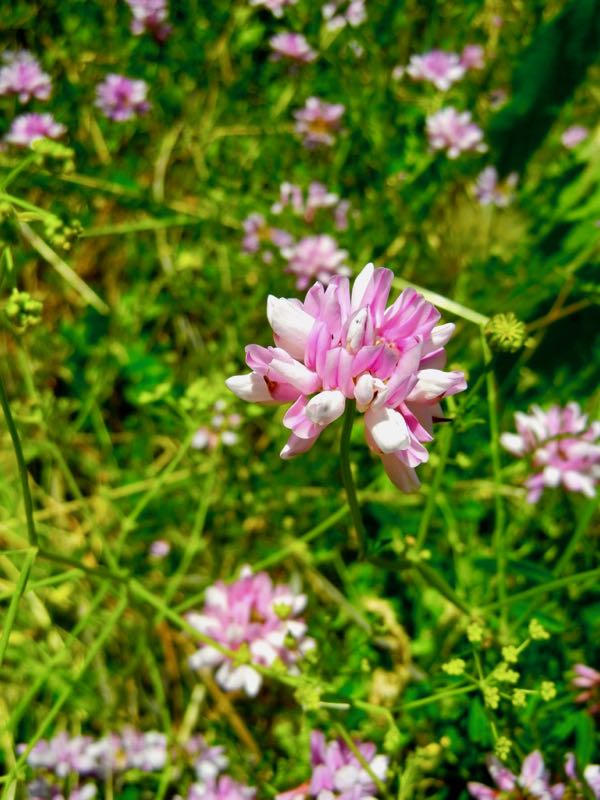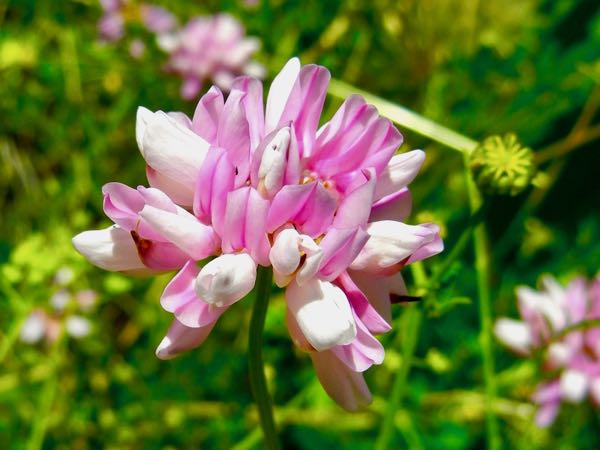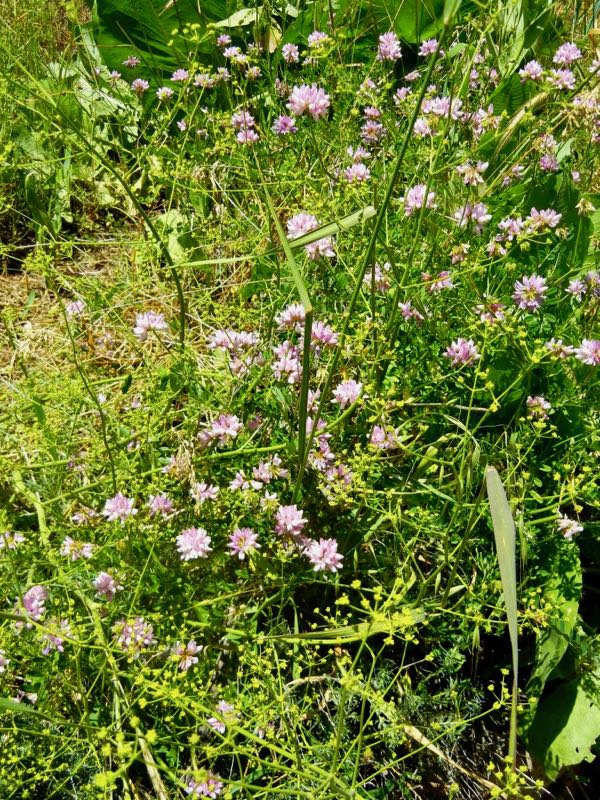Securigera varia: The Crown Vetch
Background and Family: Securigera varia, commonly known as Crown Vetch, Hive Vine, Rose Vetch, Rosy-flowered Crown Vetch, or Purple Crown Vetch, belongs to the Fabaceae family. Crown Vetch is a low-growing vine that can reach a height of 2ft or 60cm. It is a hardy plant with a spreading habit. Crown Vetch is commonly used for erosion control, particularly in the United States. It forms thick fern-like leaves and produces clusters of fragrant pink pea-like flowers during the summer months, from June to August.
Cultivation of Securigera varia:
Sunlight: Crown Vetch thrives in full sun and prefers sunny locations. It requires at least six hours of direct sunlight per day to grow and flower successfully.
Watering: Securigera varia is drought-tolerant once established and does not require excessive watering. Water the plant moderately, allowing the soil to dry partially between waterings.
Soil: Crown Vetch can adapt to a wide range of soil types, including well-drained soils. It can grow in various pH levels but prefers neutral to alkaline soil conditions. Ensure that the soil has good drainage to prevent waterlogging.
Pruning: Prune Crown Vetch as needed to maintain its desired shape and control its growth. It can be pruned back to the base in autumn or spring to rejuvenate the plant.
Propagation: Securigera varia can be propagated from seed, semi-ripe cuttings, or division.
Seed Propagation: Collect mature seeds from the plant and sow them directly into the prepared soil. Ensure proper soil contact and moisture for successful germination. Seedlings will typically emerge within a few weeks.
Semi-Ripe Cuttings: Take semi-ripe cuttings from healthy Securigera varia stems during the growing season. Plant them in well-drained soil and provide proper care to encourage root development.
Division: Divide Crown Vetch plants in early spring. Carefully dig up the plant and separate the root system into smaller sections. Replant the divisions in well-drained soil and water thoroughly.
Pests and Diseases: Securigera varia is generally disease-free and pest-resistant. It requires minimal maintenance in terms of pest and disease control. However, it is important to monitor the plant for any signs of infestation or disease and take appropriate measures if necessary.
Additional Tips:
- Invasiveness: Securigera varia is considered invasive in the United States, as it can outcompete native plant species. Use caution when planting it in natural or sensitive ecosystems to prevent its spread.
- Toxicity: Crown Vetch contains nitro glycosides and is toxic to horses. However, ruminant farm animals such as cows and sheep are not affected by its toxicity due to their digestive system.
- Wildlife Interaction: Crown Vetch serves as a host plant for the Zygaena ephialtes moth, providing habitat and a food source for these insects.
- Erosion Control: Crown Vetch is commonly used for erosion control due to its spreading habit and deep-rooting system, which helps stabilize soil on slopes and disturbed areas.
- Self-Seeding: If you wish to prevent Crown Vetch from self-seeding and spreading uncontrollably, remove young plants or spent flowers to minimize seed dispersal.
- Maintenance: Once established, Securigera varia requires minimal maintenance. However, its deep-rooted nature can make it challenging to eradicate if necessary.






